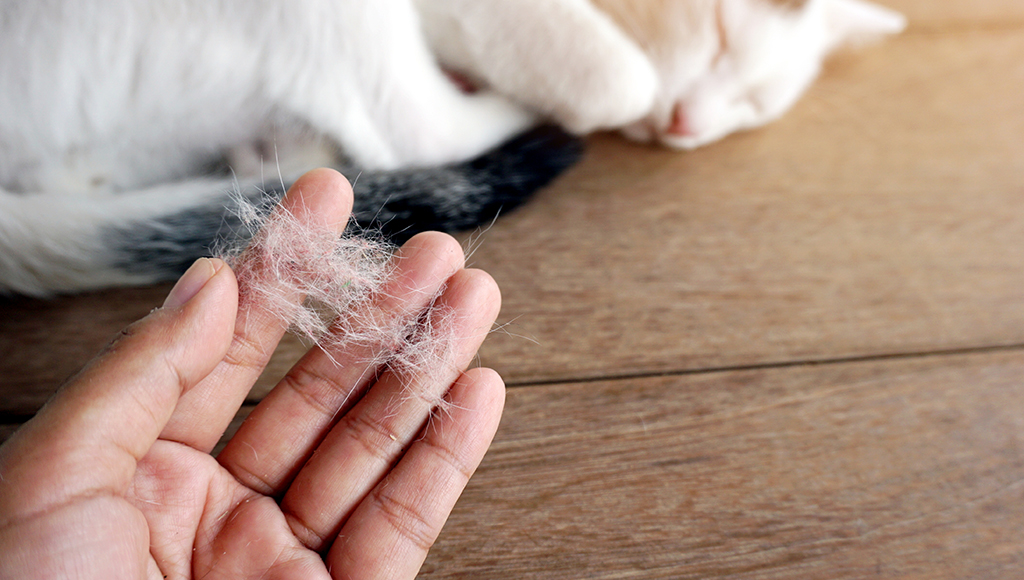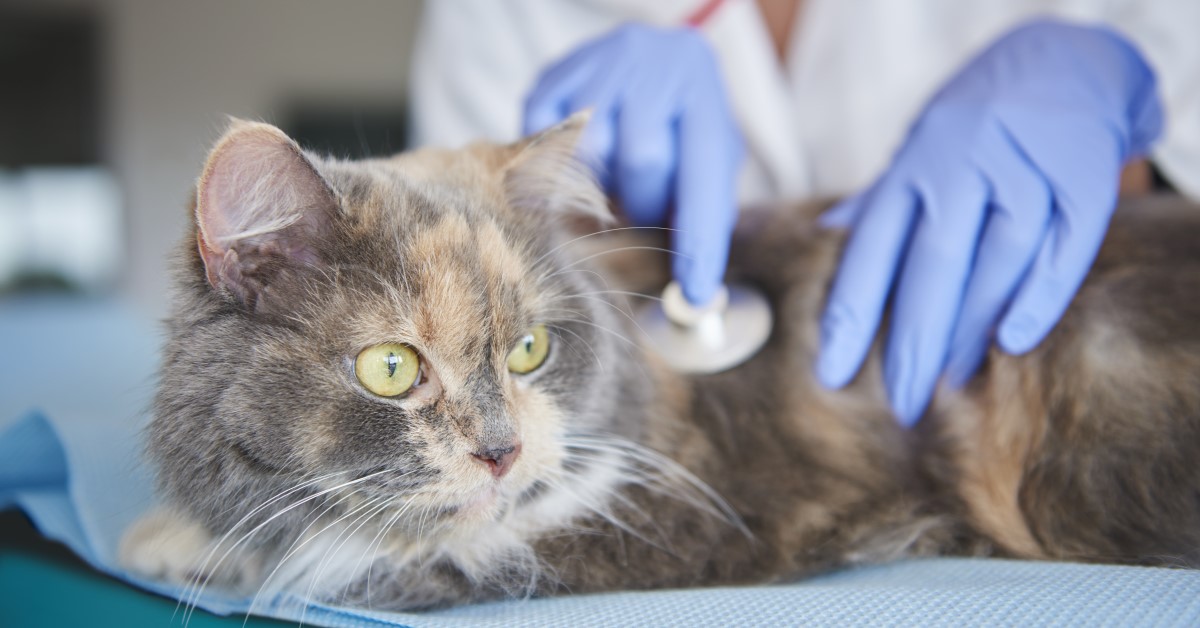Different Types of Pet Hair Loss - Part III
Information about some of the less common causes of pet hair loss.

There are many diseases and conditions which can cause a dog to lose hair; more than most people realize even exist. This article will reveal some of the less common causes of hair loss and the treatments.
1. Alopecia Areata - An auto-immune disorder.
Symptoms: Patches of hair loss especially on head, neck, and
body; no itching.
Treatment: Microscopic examination of hairs; biopsy if
needed, and recovery is usually spontaneous.
2. Black Hair Follicular Dysplasia/Alopecia/Aystrophy - Rare hereditary disease in dogs with hair of multiple colors; more common in Bearded Collies, Basset Hounds, Salukis, Beagles, Dachshunds, and Pointers.
Symptoms: Loss of dark or black hair only; symptoms appear
between 3 and 6 weeks of age; sometimes scaling also occurs.
Treatment: Hair will not return, but shampoos for scaling
can be used if necessary.
3. Castration Responsive Dermatosis - Common in young dogs who have not been neutered, and in Chows, Samoyeds, Keeshonden, Alaskan Malamutes, Miniature Poodles, and Pomeranians.
Symptoms: Symmetrical hair loss in genital area and neck
which may progress onto trunk. Skin may appear darker and
severe scaling may occur. Hair color may fade with the coat
looking similar to a"puppy coat".
Treatment: Castration.
4. Cheyletiella (rabbit fur mite) Mange - Caused by an infection with the Cheyletiella mite.
Symptoms: Itching, scaliness; some hair loss, if infection is
severe.
Treatment: Pyrethrin, Permethrin. (Permethrin NOT USED on
cats)
5. Color Dilution/Mutant Alopecia - Hereditary condition affecting dogs with blue (diluted black) or fawn coat colors; more common in Dobermans, Dachshunds, Great Danes, Yorkshire Terriers, Whippets, and Greyhounds.
Symptoms: Hair in the blue and fawn-colored areas starts to
thin at around 6 months of age. Secondary folliculitis often
develops as well.
Treatment: None. Avoid excessive grooming or harsh shampoos.
Protect the skin to prevent secondary bacterial infections.
6. Dermatomyositis - Some breeds are predisposed to this condition whose cause is unknown. This condition is aggravated by trauma and UV light.
Symptoms: Redness, scaling, crusting, hair loss, and scarring
on face, ears, and tail; atrophy of muscles involved in
chewing.
Treatment: Minimize trauma and exposure to UV light. Give
Vitamin E, short term use of prednisone, oxpentoxifylline.
Some severe cases do not respond to treatment, and euthanasia
may be considered.
7. Drug or injection reaction - Rare skin reaction to a drug which is inhaled, given orally, or applied topically; more common with penicillins, sulfonamides, and cephalosporins. This reaction usually occurs within 2 weeks of giving one of these drugs.
Symptoms: Can vary widely and may include itching, hair loss,
redness, swelling, papules, crusts, ulcers, and a draining
wound.
Treatment: Discontinue offending drug; treat symptomatically.
8. Epidermal Metabolic Necrosis (necrolytic migratory erythema, hepatocutaneous disease) - Uncommon skin disease in older dogs where skin lesions develop due to certain diseases including liver disease, diabetes mellitus, and some pancreatic tumors.
Symptoms: Reddened, often ulcerated areas with hair loss and
crusts; foot pads may become thickened.
Treatment: Treat underlying disease and provide supportive
therapy. This condition has a poor prognosis.
9. Granulomas - May be due to infections; the body's reaction to foreign material such as plant material (e.g., foxtail) and suture material; other constant irritation; or unknown causes.
Symptoms: Solid firm nodules of varying sizes; those due to
foreign bodies often have draining tracts; may develop hair
loss, ulcers, and secondary infections.
Treatment: Surgical removal of the foreign body (in the
case of plant material, tracts may be extensive and require
major surgery); antibiotics will be used if infected; and
treat any other underlying cause.
10. Histiocytosis - There are several kinds of histiocytosis: malignant, which is a cancer that affects the skin and internal organs; systemic, which is a rare disease which affects skin and internal organs; and cutaneous, which is a benign disease affecting the skin.
Symptoms: All types cause nodules with hair loss. The
malignant and systemic conditions also have ulcers.
Treatment: For malignant condition there are no effective
treatments; may need to consider euthanasia. Systemic
condition has a poor response to chemotherapy. Cutaneous
condition responds to corticosteroids; however relapse is
common, especially in Shar-Peis.
11. Interstitial Cell Tumor - Tumor of the testicle; may not always cause any skin change.
Symptoms: If skin changes occur there is a loss of hair on
the trunk, enlargement of the tail gland and perianal glands;
may see increased pigment in the skin.
Treatment: Castration; anti-seborrheic shampoos help.
12. Kerion - Complication of ringworm infection.
Symptoms: Nodule with hair loss and multiple draining tracts;
may not see other signs of ringworm.
Treatment: Clip infected area and apply topical treatment and
shampoos; may also require systemic treatment with
ketoconazole or itraconazole.
13. Post-clipping Alopecia - Hair may not grow back immediately after it has been clipped; which animals may be affected can not be predicted; more common in dogs with thick undercoats e.g., Huskies and Chows.
Symptoms: Continued lack of growth in hair that was clipped,
e.g., for surgery.
Treatment: None; hair will eventually regrow, but may take up
to 24 months.
13. Solar Dermatosis - Skin reaction to sunlight, especially unpigmented skin; most common on the noses of Collies, Shelties, and similar breeds.
Symptoms: Initial redness, hair loss, and scaling on nose and
ears; more advanced stage includes crusts and ulcers.
Treatment: Must avoid further sun exposure, especially 9 am -
3 pm; use sunblock; steroids; tattoo the nose or apply black
ink.
Our next article will cover skin conditions and diseases that are even more rare. As with any condition that affects your pet, it is always best to consult with your veterinarian if you have any concerns or questions. A thorough evaluation and proper diagnosis from a veterinarian is the best first step to providing the best treatment for your beloved pet.
Ready to start saving money on pet wellness care?
Then take a look at Mint Wellness, the pet wellness plan that provides fast reimbursement on routine pet care. Save on vaccinations, wellness exams, preventatives, dental, and more!
Learn More


